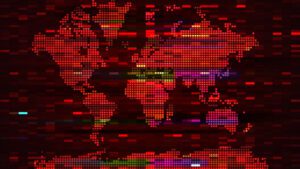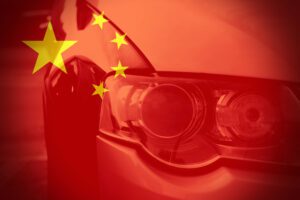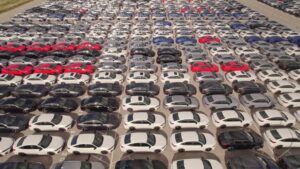|
|
|
|
|
Growing Threats To Global Trade
|
The following piece was published in the International Monetary Fund’s Finance & Development Magazine in June, 2023. Four years ago, one of us wrote an article on the future of trade for the June 2019 issue of this magazine, celebrating the 75th anniversary of Bretton Woods. The message was that there was no strong evidence of a retreat from globalization, but international trade and the multilateral system that underpinned it were under attack, and their future would depend on policy choices. Since then, policymakers in some of the world’s largest economies have made choices to halt further international integration and, in several instances, to embrace protectionist or nationalist policies. Today, there is still no conclusive evidence that international trade is deglobalizing. When measured in US dollars, global trade growth slowed after the global financial crisis in 2008–09 and declined sharply at the onset of the pandemic in 2020. But since then trade has rebounded to the highest value ever. As a share of GDP, global trade has fallen modestly, driven mostly by China—which for years has pursued a “dual circulation” strategy of prioritizing domestic consumption while remaining open to international trade and investment—and India. This reflects the end of an extraordinary export boom both countries experienced in previous decades as well as fewer imports of intermediate goods than in the past. Yet, as a share of GDP, imports of intermediates by the rest of the world are still growing. The same is true of exports. American and Chinese tariffs introduced in 2018 did not reduce trade. They curbed trade between the US and China, as expected. But trade in the products most affected by tariffs grew among the rest of the world. In other words, trade was merely reallocated, not reduced. And the tariff war did not stop other countries—such as members of the African Union, the Association of Southeast Asian Nations, and the Comprehensive and Progressive Agreement for Trans-Pacific Partnership—from pursuing regional or plurilateral trade agreements. The COVID-19 pandemic led many countries to temporarily restrict exports of medicines, and some halted shipments of wheat and other foods as prices spiked following Russia’s invasion of Ukraine. But many governments are still aggressively pursuing economic integration, for instance through deals that make it easier for professionals to work in foreign countries or that facilitate the flow of consumer goods through common safety standards. Trade may, of course, respond with a delay to changes in the policy environment. And policy itself may lag changes in public sentiment. Terms such as “national security” and “reshoring” have shown up more frequently in news articles and research papers. Perhaps most telling are recent polls of economists by the University of Chicago’s Booth School of Business. In March 2018, 100 percent of those surveyed were against the initial US tariffs. Yet in January 2022, respondents were skeptical about global supply chains: only 2 out of 44 economists disagreed with the statement that reliance on foreign inputs had made American industries vulnerable to disruptions. |
|
China Has Become an Electric Vehicle Export Behemoth. How Should the US and EU Respond?
|
Next Wednesday, March 13, WITA and the Asia Society Policy Institute will host a free webinar titled “What’s Driving Chinese Investment into the Mexican Automotive Sector?”. Information can be found here and below. On Thursday [February 29], US President Joe Biden announced that he has directed the US Department of Commerce to conduct an investigation into the potential national security risks from imported Chinese vehicles. The announcement follows comments made by US Commerce Secretary Gina Raimondo at the Atlantic Council on January 30 about several specific concerns. Modern vehicles contain a multitude of sensors that could aid Chinese intelligence services in collecting data around sensitive US facilities, such as military installations. These sensors could also enable collection of other data, such as real-time economic and mobility data. “Do we want all that data going to Beijing?” Raimondo asked at the Atlantic Council. Raimondo also emphasized the sheer number of electric vehicles that China is exporting. Indeed, China has become a battery electric vehicle (BEV) export behemoth. Europe has become the top destination for Chinese BEV exports, for now, and exports could continue to rise due to cost reductions and synergies with China’s shipbuilding complex. Responding to these dynamics could prove challenging for the United States and Europe, given the competing priorities of decarbonization, economic goals, and the mitigation of security risks. Working with allies and partners, the United States should adopt a joint, balanced approach to Chinese BEV exports by following pragmatic interim guidance while comprehensively studying the security risks these vehicles could pose. These interim steps should include preventing Chinese-made electric vehicles with sensors from reaching locations sensitive to US and allied security, such as military installations, and restricting them altogether from Guam, Okinawa, and other places relevant to Taiwan and South China Sea-related contingencies. Such interim measures would help keep the United States and its allies secure while the risks that Chinese BEVs ultimately pose are determined. |
|
Are Chinese Corporate Subsidies the Only Policy to Influence Incentives to Export EVs to the European Union?
On 13 September 2023 European Commission President von der Leyen announced an antisubsidy investigation into EVs imported from China. She asserted that the price of Chinese EVs “is kept artificially low by huge state subsidies”
Under WTO rules for anti-subsidy investigations asserting subsidies exist is not enough. Those subsidies must alter market outcomes in the EU in ways that harm local rivals. In turn, this begs the question as to which public policies have influenced Chinese incentives to export EVs to the EU in recent years? An investigation reveals that multiple policy initiatives bear down on Chinese exporters, complicating the task of isolating the effects of Chinese producer subsidies. Three pieces of evidence are germane.
First, for sure Beijing has announced plans—even “strategic plans”—for the EV sector. But plans don’t always translate into tangible state action—so showing a plan exists doesn’t prove subsidies harmed EU industry. Likewise, repeating opaque consultancy “findings” of the total amount of subsidies ($57bn in one case) for Chinese EVs isn’t good enough. Those subsidies could be purchaser incentives, not grants to expand capacity or to lower production costs. Different subsidies do different amounts of harm to foreign rivals and some may not harm foreign rivals at all.
What is undeniable is that publicly-listed Chinese EV producers have reported in their financial reports receiving state-provided financial grants. Until recent years around twenty such reports were filed every year. In addition, in its 2022 10-K filing Tesla reported receiving land use rights from Shanghai’s local government and $76 million in state grants during 2022. EC officials wishing to impose import duties will, at a minimum, have to show how the form of these subsidies affected incentives to export to the EU.
Second, a major complicating factor is that, since at least 2015, China has been reducing purchaser incentives for EVs. By reducing the incremental profits earned from selling EVs in the Chinese market, the incentive to export has increased, relatively speaking. Apparently, this logic has not escaped European firms operating in China, the gist of which was captured in a recent report in the Financial Times: “China should do more to stimulate domestic consumption, European businesses have declared.” This reinforces the point that the form of subsidy matters and implies that foreign rivals aren’t adverse to higher Chinese subsidies when it suits their purposes.
|
|
|
|





